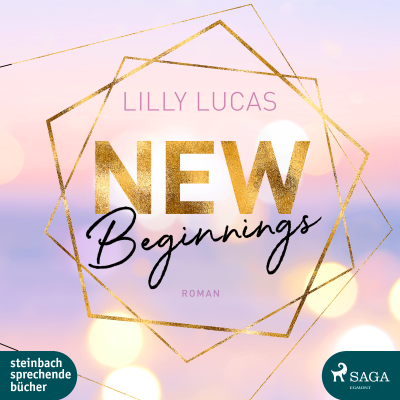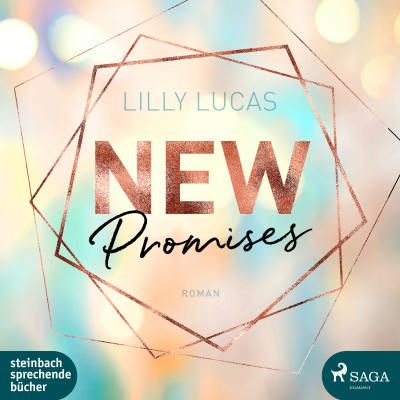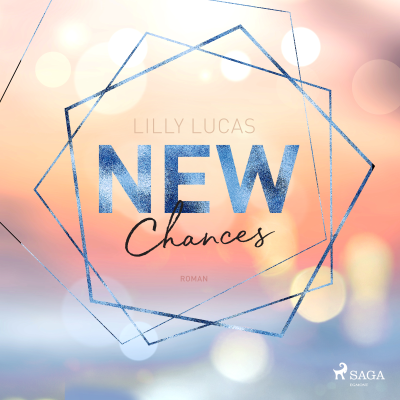
Aligned Podcast – FitzMartin
Podcast von Aligned Podcast – FitzMartin
B2B Marketing
Nimm diesen Podcast mit
Alle Folgen
6 Folgen← All Episodes [https://fitzmartin.com/aligned-the-podcast/]ALIGNED Most sales professionals understand how to sell value. Typically that means we’re promising to increase your revenue or decrease you costs. But there is a third component to the Value Triad that is often overlooked and that is the role of emotion (also known as Emotional Contribution) in the buying process. Mastering the selling of Emotional Contribution can give you a distinct advantage in the market. [https://fitzmartin.com/wp-content/uploads/2018/12/Sean-selected-square.jpg] Sean Doyle: Hello, welcome to Aligned the podcast for the executives of emerging middle-market companies, companies experiencing rapid growth, and executives who are looking for new ways to drive that growth. My name is Sean Doyle. I’m your host. Typically, we have a guest on our show, but today, I’m your guest. I’ve been thinking about something and I want to share, with you, I believe what’s one of the most critical forms of thinking about marketing that you could possibly engage with. What I’d like to talk about today is value, this idea of value. What does it mean to the executive pursuing revenue? Well, I’d suggest that you might even see 20 to 30 percent growth in revenue just by listening to these ideas and applying them. So, let’s go. Let’s dive in. First, what’s this idea of value so you can look at this from a value-and-fairness-being-subjective point of view, and that’s what we’re going to do. The classic in my industry is the story about Nike. What did Nike pay for a logo? Then I’m going to ask you what did Pepsi pay for a logo? And I think it’s a great demonstration of subjectivity. So put a number in your head. What did Nike pay for a logo? Now I want you to put another number in your head. What did Pepsi pay for a logo? In fact, it’s important for you to know that perhaps you didn’t even want a new logo. They just wanted a tweak of their logo. All right. So, here’s the number. Nike paid two hundred dollars. Pepsi paid one million dollars. So, this didn’t come down to a function of time or the investment of work put into these logos. And we’re not even going to discuss what was fair because you could argue that Nike paid a fair price. It was a college student who wanted something for her portfolio. Pepsi may have paid a fair price because they bought probably the services, one of the largest brand companies in the world. But, you know, there’s a five thousand X differentiation between those two prices. So, if Pepsi bought risk or reduction of risk and if Nike bought cheap or fast or quick-to-market, then you could certainly see how fairness is subjective and value is subjective. But what is value? So, in marketing, we want to call value as the difference between a customer’s perspective, their evaluation of the benefits and cost of one product or service when compared with another; value might also be expressed as a straightforward relationship between the perceived benefits and perceived costs. So, value equals benefits divided by cost. The underlying concept of value in marketing is human needs. Humans have needs that are basic — their food, shelter, belonging. But then culturally and independently, we have other needs that we would call those wants. When wants are backed by buying power, then those become a demand. So, this is all-important and it’s important to know that, as an aside, there are different types of value: functional value, monetary value, social value, psychological value. But what we want to talk about today is a little narrower. And we’re going to zone in on the Wealth of Nations. Adam Smith, in his book An Inquiry Into the Nature and Causes of the Wealth of Nations, in 1776, became the foundation of the economic thinking that we still use today. Much of it, at least, influences the way we think today. So, as we look for a basis of value, we can dismiss the labor theory of value. That’s the idea that you can calculate the value of something based on the inputs of labor because that didn’t take into account profits and losses. Right? The theory didn’t account for profit. Well, Marxism. So, the difference in the form of profit is theft, value stolen. That was what Marxism launched from. So then became this subjective theory of value, where all value is in the eye of the beholder. And now I want to introduce, to this, the idea of a value triad. I think it’s a more balanced approach to looking at value. So, the value triad states, there are three ways somebody buys value. They are looking for and purchasing revenue gain. They’re looking to purchase cost reduction. Well, most of us live in a world of understanding how to sell revenue gain or cost reduction. Most of us are comfortable in B2B with even proclaiming those numbers. Studying those numbers, having sales talk about those numbers. And then this word, emotional contribution, comes in. Well, that’s what we want to talk about today. And this is where the money is going to be made. So, let’s talk about this customer-perceived value. If the customer-perceived value is important and they’re looking for these three aspects of it, and we want to focus not on revenue or cost, but we want to focus on emotional contribution, we should define that. The first way we want to define emotional contribution is by giving you a simple framework: past experience, marketing, social, service, quality. Those are all aspects, and not an exhaustive list, of emotional contribution. So, what does that mean? Let’s break this down and let’s start with service. If you’re coming down to a deal, the close of a deal and you’re looking for a variation, especially if you’ve got a business that lives in the commodity space, then you’ve got to find other ways to differentiate. Or maybe there’s parity in your business, like banking or law. Well, you’ve got to find differentiators and that’s probably going to be emotional contribution. So, what would that look like if it was service? Well, you could articulate the specific service you offer, the cost of that service, perhaps it’s a value add. You could articulate that as a way to sell, as a way to help someone make a decision in the emotional contribution space. Part of that value triad is service. That’s an emotional contribution. Another way we can go is quality. We could go with social. We could go with marketing. Let’s go. Let’s pick on quality. Perhaps one of the things you want to offer is different levels of quality. What if you didn’t have to buy the product that would last 30 years? What if you made a product that would last 10 years? For example, I had a lawyer once, I asked if he could study a problem for me. I asked him how much it would cost to solve that problem, to figure that out. And his suggestion was $10,000. Well, I didn’t think it was a $10,000 problem. So, I said, well, what are my alternatives? He said, Well, what if I give you an 80 percent answer? I said, Well, OK, I’ll bite. What’s an 80 percent answer? And it was really simple. Is that 80 percent chance I get this right based on experience, I’m going to charge you two thousand dollars to think about it and get back with you quickly. But I want the 20 percent variance, for you to understand that I might not be right, but you chose not for me to study and think about it for the $10,000 answer. I was very pleased to buy a lower level. So, you could do that with your service industry. Social impact is a great emotional contribution. You know, I tend to think of Caterpillar. Caterpillar is the largest in that space. But it’s really a highly fragmented space of big-things-that-move-dirt. And you could buy a lot of different, less expensive, options from all over the world. But Caterpillar has a certain cachet. And if you’re driving and operating and owning and working with Caterpillar equipment, there’s a social value to that brand marketing. How often do you think about your products or services as being part of the way your customer could market by purchasing your stuff? Your customer actually can offer a better value proposition to their customer. Have you ever taken the time to articulate what that might look like? Past experience with your ad agency probably told you to put them upfront and use them as testimonials to draw people in. Well, there’s actually a really, really powerful argument to be made, in the cognitive marketing model that we use, back at the stage 4/5 conversion, when someone’s an action and they’re getting ready to close the deal. But the emotional contribution of sharing past experience, lowering risk and giving even us social cachet to “Oh, you work with that person. You work in this industry. You are the leading group.” Well, that’s all emotional contribution. So, business owners, as you think about this, I want you to consider emotional contribution as an incredibly powerful lever. Instead of offering discounts, cost reduction, instead of lowering your price, go to emotional contribution. Train your sales force to think this way. Have your marketing team equip you in these categories, in this framework so that your salespeople are ready. Revenue gain. Perhaps you don’t want to make it as big of a deal out of revenue gain or cost reduction. Well, don’t give up on either of those. Just shift the argument, move the argument to emotional contribution. So, the problem is in B2B markets, the supplier of strategic products and services often assume they only have two options for landing sales features benefits, cost reductions, price, but they have a lack of ability to close. And all that happens is you lose margin, you lose revenue. Move over to this value idea. And in fact, in the next episode, I’m going to do one more individual episode around value mapping and how customers buy. And we’ll get into customers only buy for three reasons. Two of those reasons have nothing to do with finance, revenue, money. So, let’s dive into that next. But today, I want you to walk away thinking: The value triad is important to me. There’s revenue gain. That’s a value we should be selling. There’s cost reduction. That’s a value we should be selling. There’s emotional contribution. That’s a value we should be selling. I think you’re going to see 20, 30 percent lift when you start selling this way and add that to your toolkit. As always, we love sales. Email us at sales@fitzmartin.com and we hope this adds value to your life. Dive in!
← All Episodes [https://fitzmartin.com/aligned-the-podcast/]ALIGNED How much damage can a poorly written email do to your sales efforts? Plenty. And yet, all of our inboxes are stuffed with badly written, poorly thought out email. In this episode of Aligned, Sean Doyle and Lee McKnight share some of the worst offenders that they’ve received lately, as well as some insights to help you improve your own writing. [https://fitzmartin.com/wp-content/uploads/2020/05/0.jpeg] Sean Doyle: Lee McKnight is an SVP of sales with a great background in health care and services industry. The man understands how to sell. Sean Doyle: And I think today you’re going to enjoy on Aligned the podcast that serves the executives of emerging middle-market companies. People who are looking to find levers to pull, to grow faster, to grow more effectively, to make more money. Today, in Lee’s call with us, we were able to explore terrible sales emails. That sounds crazy, but he and I each have a folder in our inbox where we collect the worst of the sales emails we ever get. Sean Doyle: So we pulled together a few of them. Today, if you listen, you’re going to meet the Narcissist, Mr. Over Eager, the Lazy Guy, the Faker and more. The goal for us today was to share with you some of the worst, to make sure that you’re not doing that. But also, we have a thoughtful look into what does work. Why? How does sales use email effectively? So that said, let’s talk to Lee. Sean Doyle: Lee, let me give you an introduction that your father will be proud of and that your mother will believe. Lee is the Vice President of Sales at RSW US. They specifically work with professional services firms and they help their clients do outreach to their specific target markets. Sean Doyle: Lee is the Director of Sales there, but his focus or RSW’s focus is broader than just dialing for dollars. They’re working all the way across omnichannel: social media, blog contents, webinars. They do use email. And not that long ago, I heard a podcast that Lee did about email, sales emails, and I thought it was intriguing. And you should go follow up. Lee, where is your podcast? Where would people find that? Lee McKnight: Yeah, we actually do, it’s a video series. It’s both, but the video series is more up to date. That’s our YouTube channel at RSWus.com. Sean Doyle: So go there, check out the email podcast that he did, or excuse me, video series that he did. Lee is a smart guy. He’s not only a sales guy, but he’s a JD. Right. That means you’re a smart, smart lawyer type. Right? Lee McKnight: I guess. I did it, yes and survived. Sean Doyle: So from there went into healthcare marketing in Nashville and now is in Cincinnati. And just generally a good guy. And if you look at the wall behind him, if you could see right through there, and see the wall, you’d see he loves music. So, he and I both are hacks on the guitar. But he does it in front of people. I do it all by myself, so… Lee McKnight: Well, thank you. Sean Doyle: So, we thought about this, and Lee you and I had this conversation to talk about terrible sales emails. Oh, man. I come across them all the time. In fact, I’ve got a folder. If you could look at my computer, and on the folder, it’s “terrible sales emails”. Hence the clever name of this podcast episode. Lee McKnight: Yes, I’ve got my own as well. I like to keep almost every one I get. And some of them are good, mind you, but most of them are not. Sean Doyle: My math, in my life, I get about 280, 290 emails a day. So, if I take a day off, on the occasional day, I get those 280 emails or so. I had them this morning. Then I also get probably five or six calls a day. And I don’t know. I just would like your opinion, at first. What do you think the odds are better? Lee McKnight: Gosh, it’s a good question. I’m kind of surprised, actually, that you get that many calls a day. I feel like so many folks are afraid to pick up the phone. But I think for us. It’s so critical that you use all these platforms in concert with each other. I really think you have to not only have those two but include social where it makes sense. And even use things, old-school things like direct mail, which is not what we’re here to talk about. But to your point, why you ask the question, I definitely think that people who aren’t using the phone are doing themselves a disservice. But email is still critical. It’s just gotten even harder to breakthrough. Sean Doyle: So what do you think a good call-to-contact ratio would be with the telephone? And what’s a good ratio if you do an email? And I’m going to ask you to throw out these specific numbers without any advance notice, so good luck. Lee McKnight: So I’ll take our own experience, right? I mean, and as our firm reaching out to marketers, predominantly, not all marketers, but what we usually see, as far as breaking through, is anywhere from seven-to-twelve touches. And I know that’s a bit of a wide spectrum, but I think within those seven, I’m going to say that’s over the course of three-to-four weeks. Lee McKnight: And I’m going to say alternate those touches to where you have, minimally (and I’m saying going in cold) now when you come in and you hit that warm-to-hot basket, it’s a little different, right? But just overall, generally, I’m going to say two-to-three calls, two-to-three emails, at most. And then you’re going to vary with something like a LinkedIn invite, if someone’s a little bit warmer, where you’re not just a straight cold sell on LinkedIn, which is all other podcast really about the used car lot that’s become. Sean Doyle: It kind of has. I love all the delightful offers I get to partner. “Partner” is my favorite word. I don’t want to be your partner. I just…Anyway, another subject. Another conversation. How to use LinkedIn well. So, the listeners of this podcast are typically executives of emerging middle-market companies. And they may be a CEO, maybe a CFO, maybe an SVP of sales or a CMO. So, what I’m hearing you say, as far as practical application, right out the gate is just email alone is not a plan. That’s just lazy. And that’s the way I see it, too. So, if you don’t have any alignment between what your sales force is doing and what your marketing team is doing, then there’s your first step. You’ve got to have an integrated omnichannel — I’m old enough, we called integrated marketing communications. Omnichannel is today’s cool way of saying it. Lee McKnight: So that would be the first thing you’d want to look at. I mean, email alone is going to have a diminishing return. We always tell people we want to see 20% to 25% open rates. If you’ve got a targeted, well-defined, valuable email. Lee McKnight: But if it’s not valuable, if it’s this pure raunchy email junk that goes out to sell, than 10% rates become 6% rates become 1% rates, and it’s just going to go away to nothing. So, the first rule of email is it has to be integrated. It can’t just be this independent shot. It can’t be a lazy way to get leads. Sean Doyle: I agree. Which really leads the conversation to say, and maybe this is the oldest news, but the sales world is changed, right? It used to be the salesperson was in charge of the prospect. Now the prospect is in charge of the buying process. Sean Doyle: We use something that we call Cognitive Marketing, and it’s a behavioral-science way to break down the steps that everybody takes when they change behaviors. Selling something is helping a person change behavior. I’m buying from A to buy from B. Well, that’s a change in behavior. And there’s lots of small steps that happen. There are big public steps. There are private steps. That also is a subject for another conversation. But what I want to say is that in these steps, email has a role early-stage. So, you can have people who are unaware that something exists. You can have unawareness that somebody, a business, a service, a product, exists. You could also have, and this is more likely, I believe, a use for email: “I’m aware that a company exists, but I’m unaware of how they matter to me as a buyer.”. Lee McKnight: Absolutely. Sean Doyle: I think using email to create awareness that something exists is a horrible use of email. The GDPR and the CCPA, the Privacy Act, all that, these lists that we get; who do we send emails to? How can we send? I got an email this morning, a terrible sales email promising me a list of vetted opt-in executives who want email. Would you? First of all, do you believe that? No. Lee McKnight: I mean, I do get probably one of those every single day. Sean Doyle: So how does this legislative approach to email impact the efficacy of e-mail as a sales tool? Lee McKnight: We have a couple of folks here in the office that know more than I ever will, but it’s interesting because you know where that started, which was in Europe, and without getting too deep in the history of my company, our company, it was actually started in the U.K. in 1992. And so, I say all that because our president, Mark Snyder, was actually a client first. We’ve kept in touch with Adam Whitaker over there and had called him and had a pretty good conversation just out of the gate to say, what does this look like? This was a good three, four or five months ago. How should we start preparing for this? It will be interesting to see how that could fundamentally change, in fact it already has changed to an extent, I’m not sure these companies are really paying enough attention to it. And so, they’re just spamming out all this email, I’m curious to see what their rates are looking like. And I think it’s affecting them without them even knowing it. And I don’t know how these companies do what they say they’re doing. Sean Doyle: I’d agree with that, too. And I think, you know, any regulation or government in the United States has produced more regulation than law, particularly recently. It’s easier, doesn’t require, you know, all the politics and signatures. But the problem is there are no teeth to that regulation. So, we do make an effort; we use tech tools that require opt-in. We work with y’all, in full disclosure, and you all promised us and declare in your contracts that we’re using names and letters, that we are permitted to send out. I always find, as a salesperson, the challenge in using an email to follow up with somebody I met. So, if I meet a prospect at a meeting, a lunch, a business, I don’t ask for permission. Right? I can still just send them an email because we’ve talked, we’ve had a dialog. There’s a basis for that e-mail. I think the problems are these big massive dumps of a million names. Most importantly perhaps, not that following rules is not important, it’s just not effective. So, while we’re having a little fun with what’s not effective. I’ve chosen a few, and I think you’ve chosen a few of your favorite worst emails. I want to share a few of mine. If you see yourself in these examples, if you’re listening to this podcast, then I really want you to go back and look at your company’s sales emails. And if they sound like this — stop. And then I promise at the end of the dialog, we’re going to share a few things of how to do this well. Sean Doyle: So I put little names on mine. It helps me remember them. Speaking of Mr. Over Eager, I think that is my first terrible e-mail model. So, Mr. Over Eager, I’m going to use his real emails, names not changed because I’m not going to protect the guilty. Just first names, though. So, Dominic here sent me an e-mail and said “Time to chat” in the subject line. And then followed up saying, “I sent you an email last week about our potential partnership” and then blah blah blah … “beneficial for us to partner up on” (great English.) So, wait a second, I don’t know you. You’ve acknowledged this, Dominic, but you’re telling me you want to partner with me? Sean Doyle: I think the funniest thing with Mr. Over Eager is to put these emails in the context of “if we were on a date.” So, if we’re on a date and I’m at the first few minutes of the meal and I say, you know (I married a woman named Susan) — if I said Susan, I’m kind of interested in seeing if you want to partner up. Do you think I would have had a second date? No. But if you know, if you’ll just think about these emails in terms of these dates. I mean, don’t start with partnership. Sean Doyle: If you look at the cognitive model of change (CogMar), you’re first creating awareness. Then you’re exploring these ideas of potential benefits and then you want to go through a phase that allows you to explore what would a partnership look like. But at that point, I’m in charge as the buyer of that whole process, of that journey. So terrible. Mr. Over Eager here, starting with a proposal of marriage. Slow down Dominic, just pump the brakes. Lee McKnight: Yeah. I mean that “I want to partner with you”, and you mention it in the beginning, has become so pervasive. And again, I love the word you used. It’s lazy. It’s just another of the tricks in your book. And not only is it audacious, for lack of better word, but it’s just almost condescending in that sense, to your point. It’s like, how could you possibly think this is going to be something that’s going to work? Sean Doyle: A partnership is going to reveal itself in time. You’re going to get me interested by solving a problem I have. You should know my business well enough. If you’re going to sell to me, send me an email that points out a specific problem I have. You should know that. It’s your obligation if you’re the selling party to know what the buying party’s problems are. Sean Doyle: I’m in a partnership with y’all because, over 12 months of work together, we know how each other works. And actually, it’s both ways. You’re evaluating me. I’m evaluating you. Do I hold my up my part of the deal? Do you uphold your part of the deal? So, pump the brakes. Pump the brakes on that. Do you have one you want to share? Lee McKnight: I will. So, I’m calling this the Tone-Deaf Salesperson. So, the reason I say a Tone-Deaf Salesperson is, and this is old sales axiom, but it’s “know your audience.” And similar to what you’ve already started in on. I’ll just go through a little bit of email. Lee McKnight: I love this one. This is about five or six months ago. So it started out, and I’m going to read little bits and pieces, but it started out informally, not necessarily a bad thing, he says, “Hey, Lee, even though big things are cool, smaller projects and campaigns with our partners are the unspoken heroes that don’t get as much back-patting. I wanted to share two recent animated explainer videos with you that could spark some ideas (here’s my favorite part) on how we might snap into your upcoming client execution.” Sean Doyle: What does that mean? Lee McKnight: I don’t know what that means, so there’s that. And then also, and this is where I’m going to get a little pedantic, but there’s a point. And then, he’s got one typo, OK? I’m certainly not going to sit here and say I’ve never made a typo in an email (I have) but then goes into the next piece of it, which is now a third here. He says, “To give context, we can pull these explainers together in the range of $10,000 to $20,000, roughly, (and he misspelled it without the L so it’s actually roughie) depending on the nitty-gritty deets.” Sean Doyle: So you’re a millennial, right? Lee McKnight: Well and yeah, I’ll get to that, because now it’s like really you’re just being a jerk. But, OK, so we now have two typos and he’s said two things that I’m like, OK. And so then it’s not the end of the email, but we already have SNAP and we’ve got DEETS and we’ve got typos. And now the last bit, he says, “No matter what the next big or small thing will be, it’s typically gonna be with our partners.” Lee McKnight: So the counterpoint to me saying this is, “Lee, you’re just old.” And that’s fair. I’m not. But nor am I a millennial. Yes, I understand the fact that our business communications have gotten looser and less formal. Fine. But, know your audience here. You have no idea who you’re reaching out to, apparently, and to say throughout some of these things, and on top of that, to have three typos — it’s just not a good look. You come off as kind of smarmy, kind of grating, trying too hard and going a little bit overboard. And if nothing else, for goodness sake, proofread. It’s not tough and little things happen, of course. I think to me, that that’s the thing. Just know your audience. You don’t understand that you’re emailing to, yes, millennials, but also Xs like me and whoever else. Sean Doyle: Let me ask you this, do you think that that kind of casual language, let’s say “deets” was intentional, because I’ve got a millennial in my office, he’d say “deets” totally. Is that OK to be casual? You know, I’m at the end of the boomers, and I would have been taught “no, you don’t know this person.” Lee McKnight: I guess that is what’s interesting. I was curious to get your take on it. I think that’s ultra-casual for lack of a better word. And it did bug me. And I think there is a way to be casual in tone that is more authentic. I know when you and I were talking about this earlier — just the fakeness. Lee McKnight: And, you know, when we talk with our salespeople here, it’s don’t talk at people. Talk to them. You risk insincerity. We’re not sending in love letters to each other here. But, you know, there’s a way to be authentic and actually speak to that person, where you’re not turning on this fake, smarmy, whatever it is. So, there’s a fine line, I guess. Sean Doyle: So this is my next favorite guy: The Lazy guy. Or maybe I should call this guy the, “What? You want me to do your job?”. Sean Doyle: Come on, man. So, my best friend here, Parker, reached out and said, “I’m writing from (fill in the blank) to ask about your benefits at FitzMartin, but I wanted to make sure you’re the right person. Would you confirm that that’s the case? It’s been a little while since I reached out. So, I wanted to see if you’re the right person at your company, FitzMartin. If not, would you direct me to the right person?” Sean Doyle: Parker, brother? If you really want to sell to my company, you could find out if I’m the right person in maybe 10 seconds or less on my website. Ten seconds or less. On the website. That’s not a big barrier. Sean Doyle: I think a lot of times, maybe, the sales guy is getting blamed for being lazy. I also think the marketer is lazy. If marketing is sending emails to people who they don’t know whether they could be a prospect — then that’s just a shoot & spray and kind of see what happens idea. That’s lazy marketing as well as lazy sales. Sean Doyle: OK. One more and then I’m tossing it back to you. The Faker. Because this guy just ticks me off even more so, John, my newest, best friend. (I get a lot of new best friends.) I got a very concise, short email. But it’s a lie. So, it starts with re: Update? Sean Doyle: So the implied “We’ve been talking” and now it’s up to me… Or the other one we get is what the “follow up to my previous…”. Sean Doyle: You know, they’re really smart, they won’t say follow to my previous email. It’ll be to our prior conversation or something. It’s a lie. We didn’t have a conversation. So, that’s right there on the subject line. But then it’s “Just checking in. How are your growth initiatives going?”. Sean Doyle: Well, I don’t know you. You’re lying to me by this implied… just because you’ve sent an email before does not mean we have a relationship. So, don’t lie to me. I’m smart enough to know if I’ve talked to most people before. I miss a few, right? It drives me crazy. Lee McKnight: That happens a ton. I get e-mails like that a lot and it is just such a terrible sales technique. And I always wonder… I guess they’re banking on this person so busy. Maybe they forgot. Maybe they’re like, oh, maybe I did talk to her, which is never going to happen. But I always wondered, like, what if someone did come back and you were able to get on a call with them now. Now you have to double down, don’t you? And the whole week we talked last year… Sean Doyle: And then there is the “I wanted to follow up with you and see if you received my previous message.” Now, if I did, if I wanted to talk to you. I would have called you. And I know enough about marketing and the world knows enough about marketing, you’ve got a tracking pixel in your e-mail. You know if I’ve opened it or not. So, some marketing schmuck like me (oh, no, that’s terrible) has set up a workflow and these things are just happening. Sean Doyle: I think if you’re going to run your business with integrity, run your sales with integrity. You’ve really got to know what your agency and marketing firm are doing because they may be setting up these workflows and they’re probably, the best of them, are probably even doing a/b testing. So, one of the answers to why do people do this? Probably there’s a percentage bump by doing these lies. I just think you’ve got to choose to work with integrity or not. Lee McKnight: So I had two others, one real example and then one just to point out because…well, I’ll do that first. And I called it my “Tolstoy.” And this is really weird because what’s happening recently, so you get these e-mails that are really long. Right. Which is just sacrilege in the sales e-mail world. But it’s usually like a conference or something like that, where right out of the gate, usually it’s a conference in. But in the past two weeks, literally, I’ve gotten five or six emails from actual salespeople — one was 13 paragraphs long. Lee McKnight: It was so amazing that I forwarded it to all of our salespeople, not that they would ever do something like that, but this is a “you guys have to see this to believe it.”. Lee McKnight: So Tolstoy, because there’s all these e-mails are “War and Peace.”. Sean Doyle: All right. Let’s go. Two more. Lee McKnight: Mine’s quick. So, this is one I’m calling him the Big Baller. And the fact that, you know, we all get these generic, cute, ineffective e-mails from salespeople. I got one that just kind of irritated me, which I guess is a theme for me on these. And it was like that Seinfeld episode, you know, where they’re all speaking in the third person. I’m dating myself like. You know, Jimmy’s down. And George was upset — “George is getting upset!” That’s me right now. But what he says is: “Lee, I’m in back to back meetings all day. But I wanted to take the time to send over a quick intro.” Lee McKnight: So that may seem harmless, but it irks me to no end that the sense of self-importance this guy has or was trying to project. He’s saying: “I’m really busy, Lee. But I’m going to give you just a just a brief intro here, buddy.”. Lee McKnight: You know, don’t bother. Sean Doyle: What do you call him? What was his name? The Big Baller. All right. So, I’ve got a very similar one is my rap and I call him the Narcissist. So, everybody has that English teacher in their life or I hope everybody does, who sat you down and just — Miss Palmer changed my life. There, I’ll be positive. She changed my life by just sitting and looking at me and holding a paper and saying, you can do better. So, she taught lots of techniques and things to write. Sean Doyle: But I thought my friend “Ralph,” in my terrible sales email folder, should make the star student, star pupil here. Oh, wait. He’d be the opposite of a star pupil. So, I’m just going to read how these sentences start. And I think you’ll catch on pretty fast. Sean Doyle: Hi, Sean. I hope this e-mail finds you well. I did a little research… I admire one of the recommendations you’ve made… this caught my attention… having said that, I think you’ll be interested… if you have a few minutes this week, then I’d like to…. Sean Doyle: So, he even took the time to go on LinkedIn and find a referral. You know, those gloriously self-aggrandizing things we all put on LinkedIn. So, he took one, really found one, from a guy that I worked with: “Sean has had a significant, lasting impact on my management practices, blah, blah, blah. Sean Doyle: So, he took the time to go there, cut and paste and dropped it in. So, give him some credit. That does indicate some of that research that you and I were talking about. But I think it’s so funny that it’s buried, that Ralph buried this inside of something that was all about Ralph. I mean, how many “I’s” didn’t we all learn in English to not say “I.” Don’t start every sentence with I. I think that would be a bad idea to do that. That was a little joke there. Get it? Lee McKnight: But what I loved, and maybe you’re going here, was the e-mail before they sent you. Where he said, (I mean, I’m going to steal your thunder, but yeah) where he says, “I was thinking about FitzMartin and realized the last email I sent a few days ago was focused too much on our company and not enough on you. Trying again in the hopes of learning more about your strategies.”. Lee McKnight: I was like, okay, now we’ve got something, maybe. You know, he’s probably being disingenuous, but he’s trying. And then he sent that next e-mail several days later where, again to your point, he makes it all about him again. It’s like you kind of teed yourself up, you were getting somewhere and then, OMG, what with that quote that means nothing. I mean, he was just trying to, you know, stroke your ego or whatever. Sean Doyle: Which does work, by the way. I thought a lot of him. Sean Doyle: So maybe this was a fun way to yank chains and I hope we can all recognize, well I hope we can’t, but if we do recognize ourselves in any of these examples, man, let’s go back. Talk to marketing. Talk to sales. Use this as a training example. I’d encourage everybody to put up a folder in their mail client and just start gathering these terrible emails. And then send them to your marketing team. Send them to your agencies. Send them to your sales team and say, here’s some things not to do. Make it a working session. Maybe it’s a lunch and learn. Maybe you could draft some of these workflows and some of these individual introduction emails. Sean Doyle: And, you know, again, at FitzMartin, we’d say Cognitive Marketing. What does somebody who is unaware of how your brand matters to them, what do they need to know? What does somebody who is aware of your brand and maybe they’ve been to your website, what do they need to know? What does somebody who’s begun a dialog with the sales team and what they need to hear when they’re unaware is very different than if they’re right at the end of the deal. Maybe there’s an advocacy situation inside your prospect’s office and they need something to forward — maybe that’s the long email that we need to do. Sean Doyle: Understand who you are. Understand and research the stew out of your prospects so you can talk about them. I think that’s my one takeaway. Don’t talk about yourself. If you talk about yourself, you’re done. Talk about them. If you’re selling to me, understand my needs. Sean Doyle: My business consultant has an uncanny ability to say, for example, he’d say agencies that spend more than 45 percent of their adjusted gross income on employees and internal salaries have a problem and they should learn more. Sean Doyle: Well, what do you think I did when I got that? I went and looked at how much of my AGI I was spending. And, you know, I learned something and I immediately fired everybody. No, no, no, I didn’t. We’re actually very healthy. Lee McKnight: Yeah, that’s the key. Because I think some people listening or when you say you’ve got to research your prospects — “I don’t have time. I don’t have time.”. Well, OK, but your example is perfect because OK, you might not know the ins and outs of that person at that moment. Right? But you’re speaking to them. And then when they’re opening, they’re clicking, they’re showing interest. Then you could do a deeper dive. Sean Doyle: So especially if you’re in services, you’re afraid of giving it away, right? So, the thing I would tell a services company is to share the principles. The principle is 45 percent of your AGI should be spent on salaries. So that’s a principle for my industry. Now, he didn’t tell me what to do. If it’s too high or too low. We didn’t discuss if it’s too low, here’s the problems that that creates. If it’s too high, here’s the problems that creates. So that application is why you’re paying for professional services. Sean Doyle: Let’s say you’re selling something. Let’s say you’re selling a service or some capital expenditure item. Same thing. The idea that this product, this machine could do something, or a service associated could do something for your industry. We can talk about the principle of how lease operating expenses can be lowered by 30 percent. Would you like to learn more about that? “Oh, well, yeah, that’s interesting. And you’re in my industry.” So, you know it doesn’t give me anything. I’ve still got to buy the equipment or buy the service. So, you’re not giving away anything. Sean Doyle: So, showing industry expertise. Now, if you’re broadly positioned and serving everybody in the world, then you’ve got a problem. But that’s a marketing problem that marketing should solve. That’s an excellent point. And I love the way you teed off. I mean, it’s funny, that you and I have those folders. But I think if you are a CMO of that company or CEO, it can be such a great, valuable tool for your team. That costs you nothing. Right? I mean, you’re getting these every day, whether you like it or not. And yes, some of them are just complete trash and you know it’s bad. But there are some that if you can parse it the way that we have today. I really think, as you said, have it be a learning session and it could go a long way. Sean Doyle: Love it. Lee, you’re an expert in your field. You’re a leader of salespeople and marketers and I love the insights you’ve offered. Love the follow up. Have you written a book? Anybody can buy? Lee McKnight: I should look into it after the action figure line. But yeah, we have a ton of content on our site RSWus.com. And those videos are ideally helpful for folks and they’re all based on new business and sales. So, it was great to be here. Thanks for having me Sean, I really appreciate it. Sean Doyle: Hope you enjoyed that podcast. We certainly had some humor and good time with Lee. I enjoyed the conversations, but most importantly, I hope you got some value out of it. I hope you heard a few things that you can immediately implement at your offices. The main thing I really hope you heard was this idea of Cognitive Marketing and how that informs the use of sales — when to say what in sales emails. And if you want to talk about that? Of course, shout at me. Sean@fitzmartin.com. Or just call the office 205.322.1010. Most of all, we want to be incredibly helpful to you achieving your goals. We know emails are a powerful tool and almost always it can be used more effectively. Until the next time, this is the Aligned podcast.
← All Episodes [https://fitzmartin.com/aligned-the-podcast/]ALIGNED It’s a term you are hearing more and more these days: sales enablement. But what is it? How does it add value to your sales & marketing organization? FitzMartin’s Anna Svarney, Will Riley and Sean Doyle discuss the growing use of sales enablement to drive more conversions of late-stage sales opportunities. They discuss a range of topics, from how different companies are structuring the sales enablement role to when you know your business is ready to add the position. [https://fitzmartin.com/wp-content/uploads/2020/02/sean-anna-will.jpg] Will Riley: Sean, you are turtley awesome. Anna Svarney: Awh.. Sean Doyle: Yeah. Thanks, Will. Anna Svarney: That’s so cute. Will Riley: You’re welcome. Sean Doyle: Oh, that is Anna Svarney and Will Riley. There are guests today on Aligned, our podcast for the executives of middle-market companies looking to improve their sales and marketing ROI. You know, a highlight today of the conversation was the practical and actionable ideas Anna and Will shared about sales enablement. So, let’s dive in. Sean Doyle: So we really are rolling, we’re speeding. We’re speeding, Vans speeding. Welcome to Aligned. I’m Sean Doyle, your host, with Will Riley, The Director of Sales Enablement at FitzMartin. Will Riley: Hey Sean, thanks for having me. Sean Doyle: Anna Svarney is the Director of Client Services. Anna Svarney: Hello… My go-to is like good morning, good afternoon… Will Riley: This is how they are, they’re kind of casual, people are laughing… Sean Doyle: I like it though, it’s alright. Will Riley: I’m really looking up her name. Sean Doyle: Anna usually has more to say on that… So today what we wanted to do was have a conversation about sales enablement and this is in follow up to a podcast that, I guess was a webinar, Will, that you and I did with one of our clients who has experienced sales enablement, seen the results from sales enablement, can put an ROI on it. And after that, the conversations and questions came about, maybe we need to dive more deeply into this. So today I want to define what is sales enablement. Why is it important? And then how is it practiced. And maybe even who owns it. Like who are the responsible parties in the business, or organization that should be involved with this practice, this conversation? First question, who owns sales enablement? Who in the organization should be listening to today’s conversation? Will Riley: Yeah, I think it varies from client to client. We’ve seen it where depending on what the resources or staffing situation is within an organization, it actually is a Sales Enablement Director. Someone that focuses on that. Sometimes its marketing lead, so the director of marketing plays a bit of a role in sales enablement or someone from the sales force comes in and actually takes ownership of that. We’ve not had one client with a repeatable internal process in terms of who is the owner. Anna Svarney: I also think it varies depending on how your organization is set up. So, you know if it’s a smaller organization that has maybe say a Director of Marketing and a Vice President of Sales, it’s really going to kind of depend on those personalities and what their role really looks like who might own that relationship. But I’d say it’s going to be the person that’s the leader in that area. There are organizations, bigger organizations, that have a true CMO who might be the person that is responsible. Sean Doyle: So, it seems like y’alls answers are kind of on an as-is basis, sort of all over the map like there’s no… which leads me to a question like is this even a new thing? Or is this just a new name on the way things used to get done? Why are we even having this conversation about Sales Enablement? What is it? Let’s start with maybe with what it is and then answer the question, is it new and who was doing this role in the past? Will Riley: Yeah, I think there’s a little bit, just as we’ve seen with inbound marketing, or lead generation, we pick on sales enablement as the new buzzword in marketing and sales. I don’t think any sales rep ever has not tried to sell more effectively or efficiently. Sean Doyle: So, two years ago we’d be having this dialogue about marketing automation technology… Will Riley: We really would, we really would. Sean Doyle: And then two years later there’s 400 options and we’re worn out by it. Is this just going to be flash in the pan? Or is this… like MAT, marketing automation, isn’t a flash in the pan, right? It’s still around it’s just not a hot subject. Will Riley: We’re seeing it, as you know, in sales meetings that people are asking for this… Sean Doyle: Well that’s different. Will Riley: I don’t think, I don’t think people have asked that in years past. Sean Doyle: What are saying? Salespeople are wanting it? Or Sales VP? Who’s asking for it? Will Riley: It’s usually a VP or CMO level. It’s not someone at a Director or a Coordinator. It’s someone that’s in charge of a department or that’s leading the cause of an organization. Sean Doyle: When’s the first time you heard of it? Will Riley: Gosh, it probably was I mean within the last couple years. Like that phrasing of Sales Enablement. Sean Doyle: And it came out of your roots and expertise in marketing automation. Will Riley: It did, absolutely, because so much of marketing’s role is helping sales and the sales department, salespeople. And I think we were short-sighted as marketers to only say that it was Lead Gen or Demand Gen. You’re even saying words like pipeline acceleration and things like that evolve from marketing focusing on the technology piece of it because if there’s no infrastructure then we can’t really help sales sell more effectively. Sean Doyle: Interesting. Okay, I love the word that you just used, helping. I hate that you acknowledge that like we didn’t know it two years ago, but that’s reality. I think it has definitely come to a heightened awareness. Let me take a second to read the definition, that I have in front of me at least. Sales Enablement is the process of providing the sales organization with the information, content, and tools to help salespeople sell more effectively. So, the foundation of it then is sharing information. So, as marketers it makes sense that we’re sitting in the middle of that because early-stage, we want to break things down into early and late-stage. Early-stage we’re the first people as marketers to get information, right? Some salespeople are going out and finding early-stage leads, but most of them want marketing to provide a lead. So out of marketing automation technology this idea of pressure on marketing to provide leads came about, but then, and I know Anna you’ve dealt with this, lead quality is the next problem, right? Anna Svarney: Yep. Sean Doyle: So, marketing automation maybe was insufficient in that… Anna Svarney: Yeah. I think people that jumped on the inbound and marketing automation craze a couple of years ago, it makes total sense to adopt that as part of your marketing strategy, but in some cases, it was a little bit shortsighted in that it did not take it to the next level of lead quality. What happens when that lead gets passed off to sales. And are we closing the loop and seeing did anything come of these? So many companies marketing departments just focused on number of leads. And so, I feel like the Sales Enablement is a buzz word and it’s something we’ve been hearing a lot of and it’s relatively new. But it’s sort of that next step in maturity for an organization. Sure, it’s standard operating procedure, so I don’t think it’s going to go away but it’s something that I think you have to have the maturity of mastering inbound marketing and lead generation before you can really even get to that point. Sean Doyle: So maybe it’s one of those things when you’re interviewing an agency or Marketing Director or an SVP of Sales, you’re listening for this phrase. You’re listening for this methodology and if they’re unaware of it, they probably don’t have the foundation to lead. Anna Svarney: Yes, right. It indicates where they are in the spectrum, I think. Sean Doyle: That’s interesting. Will Riley: Where it really works the best is when an organization is sophisticated, meaning that they have the right tools, technology in place. They have a marketing department. They have a sales force and there’s a regular cadence of meeting, sharing ideas, collaborating. Sean Doyle: So, Will, I know you’re working on this thing to be named later, but we’ve been dubbing it the Marketing Maturity Index and you’re building an algorithm of sorts to figure out where an institution is in its marketing maturity. Will Riley: Yeah, absolutely. Sean Doyle: So, what I’m hearing you say is that there is a baseline of maturity, understanding, that you need to have. I want people to get to look at themselves and say you know what, I have A, B, and C maybe it’s time for me to start thinking about Sales Enablement. What would be that foundation? Maybe it’s even just technology? Anna Svarney: Yes, I have a CRM system. I have a MAT system in place. My website is generating leads. If you’re doing those things then yes, because where do those leads go, right? Sean Doyle: Can Sales Enablement work, little rabbit trail here, can Sales Enablement work if marketing doesn’t produce leads? I guess in essence it could because it’s still providing information… Anna Svarney: Yes, it’s still providing information, it’s a different… Sean Doyle: Business intelligence… Anna Svarney: Right, I mean, I think the most common way we see it is through lead generation. It certainly can exist without lead generation, it’s just a different avenue. You know, we talk a lot about in our framework for Sales Enablement having an SLA or service level agreement between sales and marketing. Marketing is going to produce this many leads and sales is going to close this many or whatever it looks like. So, you’d have to just get a little creative and think about what that looks like. You know, at the very minimum it’s at least having a weekly or monthly touch base on what are you hearing from your customers. Does this message even resonate? Will Riley: Yeah, I think to your point there to answer your question Sean, whatever channels producing a lead, so if it’s the website, if it’s a paid effort, because whenever we’re coming into sales organizations what do all of them go to? Trade shows. That’s one of the number one providers of leads for them. And anyone that we’ve interacted with has said, I need feedback on if these trade show leads are any good or not. They’re asking the same questions when it comes to digital or marketing efforts. So, I do think that there is a role to play even if you’re just utilizing some of those traditional Lead Gen channels like at a trade show, an event, or something like that. Sean Doyle: So, a Marketing Director, an SVP of Sales and the Sales Enablement Officer walk into a bar… Will Riley: And they hit their head on the bar? Sean Doyle: What would the joke be there? I don’t know. I feel like there should be a joke about the three of them. We’ll have to come back, maybe episode two. We’ll have to come back. Sean Doyle: So, Anna what I’m hearing is a kind of an insider tip for the practice of Sales Enablement and that’s the SLA. That’s brilliant. I love it. The idea that both groups have to make a commitment but they’re doing it jointly because historically it’s very siloed. Right? You’ve got marketing’s doing its thing, whatever they do. Sales is doing its thing and the CEO always pays attention to that because it’s closer to revenue. And most companies have this last touch attribution model so sales typically gets all the credit and marketing executives, and maybe this is an exaggeration, but they know they should be doing it. But maybe not why and really how it’s adding. So earlier you said something about a closed-loop attribution which technology has enabled. So, what do you have to have to do Sales Enablement? A technology platform that would allow you to follow an individual lead through to revenue and then two, beginning a dialogue between sales and marketing at the strategic level. We’re going to agree to serve each other this way. I doubt, of the people listening, many people have a marketing team that knows exactly what sales is doing, where they are or vice versa. A sales team that knows or even cares what marketing should do. That’s probably an episode later for a dialogue about what sales cares about and why marketing and sales have been siloed. I have this belief system that marketers typically don’t know how to help sales late-stage well enough and they have lost the credibility of sales. Sales Enablement, I think, could face a barrier for most marketers. The sales team wants more information, more business intelligence, but maybe marketers trying to step up to that bar that SLA is great because it would tie you to a commitment. Marketing probably always gets attributed with, you’re all the guys with the earrings and the long hair and you just have fun and do whatever it is you do. We have to do the real work out there selling and making revenue happen. So, I love that idea, that SLA idea. Will Riley: Yeah. And I think what, to your point, I mean there are barriers from the marketing team because they don’t know, they may not know how to sell or have never sold before. So, one of the first things that in terms of an intake or onboarding is you’ve got to understand your sales cycle, your product offering, what’s the LTV on a product. I mean a lot of these foundational SVP, you know, level of data. Well, now the marketer has to understand that just as well as they do the different channels and technology on how to get the message out. So, in some ways, it’s a lot harder to get that started because there’s just a learning curve there of internal structure, processes, systems. Sean Doyle: It’s good to take effort to do this. Why should somebody listen to even start exploring this? Like what’s gotten y’all the most excited? The results you’ve seen, or maybe a way marketing has been able to impact in a way it hasn’t in the past or a way sale has embraced marketing. What are some success stories? Anna Svarney: I can think of one recent success story we have with a client where for a long time marketing has been pretty siloed. The website was generating leads and it sporadically would get feedback from sales or upper management saying nah these leads are crap you know? Y’all know who I’m talking about. Will Riley: Oh, that client. Anna Svarney: Yeah, but that feedback wasn’t helpful. It needed to be more instructive. But recently with that client we’ve had a little bit of a breakthrough and are getting on the phone weekly with their number one Sales Rep and Vice President of Sales brainstorming ways we can target some late-stage prospects that are on their short term sales horizon and getting the feedback and hearing, it’s like a barrier has been broken down. And they are, you know, they are speaking to marketing as they would another salesperson. So it’s like the perception has changed a little bit that now they do see value in marketing can do and because we have become so ingrained with them and we understand their sales process, they trust us and they are going to work with us that way. Sean Doyle: If I remember one of the, that client, you also built a website designed specifically for late-stage leads and Will I think you built a way to communicate only with the executive officers of the target companies. Will Riley: Absolutely. Sean Doyle: And this is a website that if you Googled it you couldn’t find it. It’s just, I mean it’s not that it’s unpublished, but it’s not designed for someone to explain who the company is or what the products are. It’s designed to meet the needs of a late-stage prospect. Will Riley: There was one particular pain that we knew that prospect was dealing with. Sean Doyle: Yes, and that was information that we got from sales. Will Riley: Yeah, it was. It was through our call. I mean we were sitting around during a monthly marketing report and we were mentioning some of the benefits of cookie and IP based targeting and how we’ve done that with other clients and that we should implement that there and it immediately became an ideation session with the CEO. And that led to this whole campaign and effort. Sean Doyle: And so, sitting at the table, sales was there. Marketing was there. The executive leader was there. So, you had this great powerful way to move into which is such a better plan than artists and writer’s kind of throwing some clever ideas or headlines. I mean that just elevates us as a profession. I love that. So, rewinding briefly, Anna you said something about understanding what we call cognitive marketing. A consumer decision journey. Now in our philosophy, we believe a lot of people understand that consumer decision journey, they don’t understand necessarily all the examples of when are specific tactics and techniques powerful and when they’re not. For example, creating awareness with a late-stage prospect is meaningless. So that’s wasted money but creating a helping relationship or pilot project to give it a kind of a taste and see attitude or deep testimonials. Those are lat-stage tools that are ineffective early-stage. So not only do you need to have an agreement on the consumer decision journey which at your company it’s probably called a sales pipeline or somewhere along the path you’ve experienced the process of defining here’s the steps people go through when buying. And anybody’s welcome to use our model, the cognitive marketing model. We’ll give it to you for free. And it’s just a good basic tool. The processes are that next level and that’s where that powerful marketing comes in. That’s where the Sales Enablement comes in and then we call them the nine arrows in the quiver of our toolkit. So those ideas are probably a little bit deeper. So, I think we’ve done a great job of introducing Sales Enablement, but we’ve not done a lot to help somebody know what to do to do this at their office. Can you all stay in the studio for a few more minutes and we could continue this in another episode? Will Riley: So busy. Sean Doyle: Hang in for one more minute. Sean Doyle: Join us again for the next episode. Anna and Will and I are going to continue our conversation of practical, interesting insight. Stuff you can take back to work and apply to your Sales Enablement thinking today. I’m Sean Doyle and this the Aligned podcast.
← All Episodes [https://fitzmartin.com/aligned-the-podcast/]ALIGNED In this edition of Aligned: The Podcast, FitzMartin’s Sean Doyle, speaks with Luke Allen, SVP of Occupational Health Dynamics (OHD) about the challenges and opportunities for marketing in closing more late-stage prospects. [https://fitzmartin.com/wp-content/uploads/2018/12/Luke-Allen_OHD_6706-e1601391264524.jpg] Luke Allen: I know I’m gonna get this deal. You just know this order is coming in and then it just goes quiet. Your boss is asking you an update on this pipeline deal and you don’t have one and you’re just you’re just freaking out. Sean Doyle: We’re continuing our conversation with Luke Allen of OHD. He is the SVP of Sales and today is our guest on Aligned. Aligned is the podcast for executives of middle market companies seeking to improve sales and marketing ROI. I’m Sean Doyle your host for today’s episode. Let’s get to our conversation with Luke. Van: Rolling. Action, action. Sean Doyle: Luke thanks for being willing to stay a little bit and continue the conversation. Luke Allen: Yeah, absolutely. Sean Doyle: Let’s recap of where we were. We had established your expertise as the SVP of Sales of an international organization. Been doing this, sales, your whole life and as a millennial, a young guy albeit some gray hair… Luke Allen: Yeah, we covered that last time. Sean Doyle: I’m the old fart marketer, right? Luke Allen: Yeah. Sean Doyle: Boomer. Now admittedly I was born in ‘64 so that’s like the last year. You know, I’m a very young Boomer. Just this for clarification. And we were having a discussion about not only sales and marketing but specifically late stage deals. And one of my favorite parts of the conversation was when you were talking about something a Boomer would like, right? The handwritten note. Luke Allen: Right. Sean Doyle: And after our session the producer shared his story. So we’ve had a jump on. Van: Wow, usually you guys just keep me in the basement and throw meat downstairs. It’s truly an honor to be here. Sean Doyle: Well look at the sunlight and enjoy it. Van: Ahh, I do need vitamin D. Sean Doyle: Tell us your story. It was great Van: Well last week, the last episode, when you guys discussed that I’m a producer. I’m an engineer and a voice actor as well. We work with voice actors all across the United States and one that we have that I am now after years of working together, we’d become fast friends. And she’s just an amazing voice actor named Kelly Butrick and she the way she got into our business was she sought us out using a handwritten letter, a box of goodies, a follow up email, and a phone call. And she has made, I don’t need to discuss how much money she has made for our business, but it is a considerable amount that would get you a nice lake house somewhere I do believe. Just in everything that you’re talking about with being relational and being purposeful about making this relationships and remembering small details about so-and-so really loves that team or they like dark chocolate. Those are those things that shock the, I really think that these days it shocks the client because they don’t expect it. No one expects anything other than junk mail. And when you get the handwritten letter makes you happy. Sean Doyle: A handwritten letter can still be junk mail if it’s not sincere. You know, if you didn’t take the time to listen, you know, and or it can be really sales-y. If I prodded you till I knew you’re a football fan and then I asked you about why, you know, what or who then that could be a little insincere. I don’t know. I love handwritten notes, I do. They still have to be done well. What would you say worked with a note that you got Van? Van: Well I’ll tell you there is one behind the wall, or behind me. Let me grab it real quick. Van: So this is from a voice actor who again sought us out online and she’d sent me an e-mail and then just sent me a nice handwritten postcard that on the front says Rachel Porter VO, youthful, fresh, intuitive. And then on the back says, “Happy spring. Hello from K.C. I hope business is going well. We have the partnership together..” I can’t really read her handwriting that much… Some projects this year, best Rachel. Just a nice friendly, you know, happy spring. I think I’d mentioned it was pollen season but it was just a very, it was a timely touch. Yeah it meant a lot to me. Let’s see what the date is March of 2019. That it’s been hanging up on my wall. And she’ll get future work. Sean Doyle: I thought it was a fun story of a postcard that became worth millions. Well, I can’t vouch that it was millions but… Luke Allen: Sounds good. Van: Real good. Sean Doyle: Today what I’d love to, go back to the basement Van. Van: Thank you. Thank you. Going back down there. Sean Doyle: Today I would love to visit more about these late stage prospects and late stage techniques that sales.. I’d hate to call them techniques. It makes it sound so clinical and like you’re doing something to somebody. It’s not a technique. They’ve got to be done sincerely. In fact one thing if you go to Luke’s LinkedIn quotes one thing that talks about is your sincerity and that you have client first. Luke Allen: Well thanks. Sean Doyle: And prospects figure out fast if you’re selling for your purposes or for their purposes. All that said, let’s get rid of the word technique. My bad. Luke Allen: Yeah. Sean Doyle: We had talked something about what we call in cognitive marketing the conversion from preparation, which is typically when marketing has handed sales a lead in the beginning. Somebody has indicated some way that they’re interested and begin to prepare themselves for a change, that might be buying a new product or a new service. And moving them over into action, so action is this late stage moment where you’re looking for budgets. The resources are assigned. The problem is there. It’s clear there is ownership of this problem with the person you’re talking to and they’re asking you, even literally, give me a proposal. Like I want to know what this is going to cost but also behavioral science tells us, and this is a big mistake I see in sales, maybe we’ll side trail for this a little bit, is what something cost is not just money. It’s time, right? It’s operational. You’ve mentioned at the very end of our last segment that there was a technical salesperson, somebody coming in to help with all those details. Do you do you split apart that question when someone says yeah I want a proposal? Do you cognizantly put out to two sections – here’s the money and here’s all the cost of change. Luke Allen: Well I think if you have a product or a service or solution that has that benefit then yes, it’s important to lay those out. So for us specifically our technology is new, so it brings some new advancements and so some of those are are monetarily. You know, we need a quote. How much is it going to cost in real dollars, right? But then you also have the side of well how much money will it save us in time savings? Or will we have time to allocate to other things? Or you know however that lays out so absolutely it’s important to document those and put them where they’re not all lumped together. For us, we separate those very clearly so we have a cost of the instrument and how that compares to competitors. But then we very clearly lay out what the ongoing costs of owning it, operating it, maintaining it and then what is the savings in time and efforts. How does that look. So again, I think that’s important to know the customer and for us, some people don’t care about the time savings as much as they do the initial investment. Some people care less about the initial investment and more about what’s it going to save me over 10 years, so technical sales and marketing has to be fluid and move into those spaces the right way. Sean Doyle: That’s great. I think one thing that we’ve seen, we’ve built something called a marketing technology maturity index. It’s a great name. I should get an advertiser to help me with that. Luke Allen: Yeah, say that three times fast. Sean Doyle: The idea of the index is when we’re helping somebody install or implement some sort of marketing technology, we need to understand where they are in the process. Are they ready for really sophisticated insights? A.I.? Or do they need a good CRM system? Something really basic that talks. So in that journey one thing we’ve learned is that to make a recommendation about technology in marketing and sales you have to, you have to, talk about all the cost of change that’s beyond the product, right? The price of the object I think is what you just said. Luke Allen: That’s right. Sean Doyle: Well something like that. So we are currently in a conversation. Salesman got into our client, not our salesman. Some other salesman got into our client and convinced them that this piece of marketing technology would be a great fit. They loved how it integrated with the product. It made so much sense. It presented well so a client called us and said hey we need to switch our marketing technology from a to b. And we said well let’s talk about that a little bit. And so by the time we took what their software tech cost and we did the conversion and we did the integration and we did the additional cost because we can do, in the technology he’s in now, we can do something in an hour that in this other technology might take two to three. Luke Allen: Oh wow. Sean Doyle: So you start looking at all those costs the cost of change, the soft cost you might call them, that that really matters. So we talked in our last episode about when you’ve got those early late stage prospects. People are moving and the tools that marketing can help sales with emotional tools, rational tools, and then this idea of creating tools like that private than public commitments. Ways that sales can make that transition, for example things like pilot projects or iPad calculators or some sort of exchange modeling. Now that we’re in this late, late stage two things I think… I’m not trying to set you up for a or b here. Luke Allen: Okay, good. Sean Doyle: But the sales gets heightened right? The stress is heightened. So I’m a salesman. Anybody that messes up my deal, that’s cash right. I’m losing cash now. Luke Allen: Yeah. Sean Doyle: So marketers have to understand when they wonder why our delightful ideas aren’t accepted, they’re not playing with your paycheck but you’re playing with their paycheck. How do you tell a marketer to approach that salesperson who does have good ideas who does have good ways to help. Luke Allen: Yeah I think again going back to last episode, the alignment side has to be there. So you have to have teams that work together which is a culture thing that’s pivotal and key to success there. So you have to have that alignment where a salesperson trusts a marketing person that’s bringing ideas even if they don’t agree with those or go with all of them. There’s got to be that open discussion on how both people can come together and bring the positive result. But you’re right about the salesperson is so focused at the end of this buying piece they’ve you know for us it’s 12 to 18 month buying cycle. They’re hungry, they’re very focused on closing this deal. Anything that’s a threat to that is is going to be seen as that. Sean Doyle: Inside or out. Luke Allen: Inside or out, yeah. And like a lot of things with your family at home, sometimes it’s easier to be harder on things that are inside than out, you know, so if it’s a marketing person in your company you’re quick to tell them, “Hey, I got it.” Sean Doyle: Yeah, I got it. Luke Allen: This is what I do. You know you stay in your lane let me stay in my lane and that also, Sean, to me another mistake that sales people make is they when they feel that pressure they almost overcompensate for follow up on the deal or on the buyer or on the person because they feel that pressure. And some people can take that and that leads them to too much follow up, too many calls, too many emails, too many touch points. And that’s something we found in our business that when you have again aggressive sales culture, you have to dial that back at certain parts of the process or you’re gonna run people off or you’re going to make them angry. All these different things that we’ve all felt when we try to buy a product, you know, good salespeople have to know when to step that back as well. Sean Doyle: Yeah I was taught that when, as a salesman I was taught that when somebody asks you for a proposal every second that passes from that moment is against you. So that would lead me to be hyper aggressive. Luke Allen: You hear time kills it kills deals. And that’s the thing that everybody, yeah. So you feel that pressure. Sean Doyle: What’s the balance? I mean obviously you could keep track of things and you could see when you lose deals and get deals. There’s some amazing technology coming out of Israel right now that uses AI to listen to words and looks at time cadences and identifies what the most successful paths are. So there’s the future of A.I. is going to impact this dialogue, intuitively Luke Allen: Yeah I mean, to me, I think really some of it goes back to the relationship part that we talked about earlier which we let off with with the note piece that people you know might or might not really agree with, but you know I say give it give something like that a try and see how that that works. But to me the only way you really stay close at that late stage by without feeling the pressure of constantly needing an update, you know, when you’re you’re just flipping out about. I haven’t heard from Sean in a day. You know, and people are telling you you know outside looking in they’re saying that you’re overreacting. If you have that relationship you really can get those updates from the buyer or from the person inside and really the best salespeople create relationships to where the buyer really feels like they’re buying a solution and a product but they’re buying it from somebody they really like and they really want to work with. And that makes the overall experience again even better than what most people are experiencing today when they buy a product online or through a retailer. You know Amazon has a great business but let’s be honest, it’s a very distant relationship. So if you can create that in a technical market or in your place of business wherever it is, the banking world you mentioned that earlier, that that relationship will be a huge difference when you come to these late stages where it gets quiet and it gets delayed and people don’t like that. They don’t like quiet. Sean Doyle: Luke I’m laughing because I remember a story you told me once about you as a younger salesperson who called and called and called. Do you recall the story? Will you tell it? Luke Allen: Yeah well I was a young salesperson and I was the hungry person you mentioned earlier and you know I have a I know I’m gonna get this deal you know and everybody that’s probably listening to this podcast if you’re marketing or sales in any way you’re you can relate to this you just know this order is coming in and then it just it just goes quiet and you’re you know your boss is asking you an update on this pipeline deal and you don’t have one and you’re just you’re just freaking out and so I resorted to what most young salespeople do. I just call everyday, you know. And email, and then I text, and I’m calling and texting and emailing and finally I get someone on the phone, you know, days later and they say oh no you know so-and-so has as unfortunately passed away and you know you’re standing there, you know. I’m so sorry for your loss you know and yes it’s me that’s left 57 voicemails. It’s really not that important in the big scheme of things of what we’re talking about now. But I think that’s part of it too of just understanding that piece of the close is you have to be close enough but you can’t overdo it. Sean Doyle: Sometimes stuff just happens. Luke Allen: Yeah sometimes things happen. Sean Doyle: And something that was a priority, a genuine priority, moves to not so much of a priority but comes back. Luke Allen: Absolutely, I mean we ended up, you know, we just they were looking for this person’s replacement which you would understand. You know, it’s not an easy fill right when someone has that go on and eventually went through but that silence can be devastating for salespeople. Sean Doyle: Oh absolutely. What a great story I mean difficult, touchy, but great story. Luke Allen: Yeah true story. Sean Doyle: Truth is stranger than fiction right, right? When we’re working with sales and the way that we create a dialogue with sales about how to support a sales individual’s late stage efforts we focus on four aspects that are revealed through this cognitive marketing, the behavioral science. And the four are simply, helping relationships, positive substitution and countering, environmental controls, and rewards for positive behavior. So in environmental control is such an easy thing. So you think about why do I take a prospect to go play golf? I take him because I’ve got four hours with him. Right. Or more or less depends how good you play right. Or you know you see people who have a box at a football stadium where they get them they get their attention. And once the behavioral science teaches us that if you can get somebody out of their environment then they’re more likely to make a change. It’s the think of some bad habit you’ve got don’t name it. Hold on hold it. If your environment doesn’t change then nothing changes as it’s unlikely. So if you’re trying to help somebody not drink beer don’t take him to a bar, right? So inversely if I want someone to make a behavioral change then I might take him to a plant tour. I might bring them to my facility. I might take them off site to a third party. And they’re not techniques right there. They’re really genuinely helpful because it allows change to happen and allows people to understand and to have an aha moment. We love aha moments. Luke Allen: Sure. So these are steps that you’re saying marketing support sales in, right? Sean Doyle: Exactly. And that’s the kind of thing marketing can come to a salesman and say I’m not going to mess up your deal. I’m gonna design an environmental control and I’m going to design and experience at your office so that you can walk in and go huh. This is different. I didn’t expect this. I didn’t know this. I learned that. Disney teaches a lot about how to do that. How do you change people’s feelings, their perspectives, from everything from the way the materials their feet are touching walking or elevation changes and sound. And so those are ways that a marketer can have a lot of power. And I bet you’ve heard a salesman say, “If we can get them to our office we close 90 percent of them.” Well that’s an environmental control.. Sometimes you can’t get a client to your office. Marketing can build an environmental control that a salesperson can take out. You can take in fact we even love, it’s old fashioned kind of like handwritten. We like things called environmental surrounds and we would build a system of printed boards that go on easels. So if I’m sitting in my conference room and I’m listening to your pitch every time a board goes up it changes visually what I see. We might have them have music playing which is super easy with a bluetooth speaker now. We might have them have some food in there which changes the smell from what they normally smell. So you’re sitting there as a prospect in your own turf but you’re surrounded by the salesman’s boards. You’re smelling the smells hearing the sounds and watching video and you. It changes that environment. Those are really powerful tools. Another one is this reward for positive behavior. And I know this is a time honored challenge. You’ve had some sales guy come up to you and say, “Hey Luke I want to do X Y Z or I want to take them out” or worse, you’ve got an expense receipt and said I already already did that. Rewards do work for positive behavior just like raising a child right. How do you define that? How do you construct those rewards? So you know you’re your team knows what to do. They know how to not go too far. Luke Allen: Yeah. With customers, you’re saying. Or potential prospects. I mean, yeah, for us everybody’s business is different obviously and how that works. But I’ve been trying to get a box at the local college football team but the company won’t go for it. But yeah for us we don’t have as many customers that can come here, you know, so other businesses have different ways to do what you just described. For us, marketing is supported creating this environmental control and some of the feeling our culture and our company remotely is through great video, through a great telling the story of the company, the culture, who we are, why we do what we do, in a format that salespeople can use it and utilize it. And you know from our experience as salespeople most of our technical sales people are really good at what they do when it comes to selling and all those things but the detail behind, you know, you mentioned Disney earlier one of the things I love about Disney is their attention to detail is just at a whole nother level. And most salespeople, you look at my desk or wherever else, the attention to detail is not my gifting package, you know. Whereas marketing they normally are really looking at how does our brand look and what feel does this have. And again, the alignment with sales, if you have good marketing and sales alignment, that end stage where marketing can wrap in and bring that closing touch to really have the customer make that emotional connection and the buy in is a major win. And for us taking customers to dinner, doing things like that, we are for that but I think the customized piece of the video and the different experiences has been a big advantage. Sean Doyle: Another behavioral science driven process that we see and use, in fact I’ve even got kind of a fun story to share, is this positive substitution encountering. So we’ve all made that presentation. We’ve put our best foot forward with amazing, everything was great, the graphics were perfect, the numbers were good. The ROI was there for everybody, both sides. You know, it was just that you’re going, Oh this is it. And then you hear something like, well we’ve asked five other companies to come in and you’re, oh my. I didn’t know that. Or since we met with you last we decided to handle this in house. Right. So yeah those are moments where you can design a positive substitution. So what do I mean by that. We were working once with a manufacturer of a motorcycle. Well we weren’t working with them they were a prospect and they said that very thing about we’re going to talk to eight other companies and see how they’d approach it which you know roll your eyes on the inside of course. But because marketing had prepared me for this I was able to say we’ll I’ll tell you what, let’s let’s do this. It’s going to cost me about twenty thousand dollars to do the first steps to build the numbers, to do what you want me to do. What if I just allow you access to my company and we’ll go through the first step of being a new client. At the end of that, I will have not spent a dollar more than going through your RFP process and you’ll have a real sense of what it’s like to work with us and you’ll even get a sense of our strategy and our insights. Worst case scenario I haven’t spent money that I wasn’t already going to spend on RFP. And you’ve gotten some results. You’ve gotten some strategy, some plans, some direction. And the CEO scratched his head and you said I could see he was thinking about all the other people he was going to have to call back and say, hey, I changed my mind. Yeah. So God just gave it to me. So I said, what if you call the other groups and say the decision making process has been delayed by eight weeks. And he said I can do that. So we did it, and we ended up launching the brand of this motorcycle. Luke Allen: Oh wow. Sean Doyle: And it was great. It was all because marketing it equipped me with a substitution. Something to offer. So I knew ahead of time, as a salesman, I could offer X, Y, and Z. So I love seeing companies that have playbooks, that the sales team knows what their boundaries are. And without having to say, let me call Luke. Luke Allen: Yeah, exactly. Sean Doyle: Which is the old car dealer track, right? That’s designed to remove control from people. That’s a separate technique and it might be worth talking about that. And that is a technique. But the last the last of these four very powerful processes is helping relationships. And I know that you’ve got this culture of helping and bringing in people what they need bringing to people what they need. My question is how do you allow a helping relationship but you don’t give away the product. How do you allow a helping relationship without increasing your cost of sales to such a point that the ROI is not there? Luke Allen: Yeah, that’s a great question. I think the main thing that we do is that we have a product that justifies and really demands that the price point that it has. So the relationship is outside of that, you know. So again, if the value and the message and the benefit is for the person and the customer of the company that is buying this product or service or solution, you can have those things both go together. So you can have the relationship that you build along with profitable product sales or service sales. And I do think that that is something that salespeople can struggle with on the reverse side. So if they create this great relationship with someone they almost feel they’re obligated, or they want to throw in, you know, you mentioned a discount or given away things, or whatever. To me, if you fairly built a product or service or solution at a fair price, you know, you’re able to deliver that with a good conscience in your relationships that you have where the deliverable is is there for both companies and the end user. So that’s normally the way that we really get our salespeople to understand what that benefit is, so they they’re not just artificially saying that. They really believe it. Sean Doyle: Do you ever have to tell a salesperson look, you’ve got 50 hours in this gig and you just gotta let it go? Luke Allen: Oh yeah. I think everybody’s got either one of those or many of those, right? Where they hang on and hang on and hang on. Sean Doyle: What do you do? How do you know where the line is? Is it intuition? Luke Allen: Yeah, I think so. Some of it’s intuition and some of it’s the lead indicators that you’re looking at. You know, what are the activities and what are the buying habits? But some of it, too, is just that ROI time on what we’ve invested and where things are. But yeah, some of it’s not really a straightforward science though. You never really know. Sean Doyle: I feel like there was a story that we wanted to tell but I can’t remember what it was but while I’m thinking about that story, and it may never come back, that’s the problem being a boomer. You millennials would remember. I was thinking about something you said earlier and that was about culture. So when we talk about marketing and sales alignment I always lead with we’ve got to create a common dialogue and a common language between marketing and sales because, you know, you’ve read a million things. There’s the consumer decision journey, coined largely by McKinsey, that defined this idea of the steps in the processes. Then you get into the behavioral science like we’ve applied it and then you get into these arrows in your quiver. These nine processes and how to use them. Well that’s great if marketing knows all that but if sales has a different pipeline, and there may be a logical, I’ve seen a lot of different pipelines. I’ve seen pipelines with 70 steps. Highly engineered. Too many steps. But ,you know, sales is talking about one thing. Marketing is talking about another thing. We’ve got to have this common language. So that may be a fairly obvious thing to do as a first step, is identify what we’re going to call things and all agree on it. You then said something about culture and language, it connected with me, you can’t have a culture without a language, right? So maybe I’ve just got this infinitesimal understanding of culture and how to create these. Tell me a little bit more about what you’re thinking. Luke Allen: Yeah. And I’m sure we could probably do a whole podcast on culture… Sean Doyle: Oh we could string people along forever. Luke Allen: Yeah, absolutely. But, you know, that’s a buzzword right now. And I’m sure there’s a thousand podcasts that are talking about it. Culture to me is the most important ingredient in this overall recipe. To me it drives results, it drives language, it drives commitment and alignment. If you don’t hire to culture, train to culture, you’re not going to retain the right talent. You’re not going to attract the right talent in whatever role that you’re looking at. And for us, we get these sales and marketing alignment because the culture of what we’ve developed has built the language to where our marketing person is so bought in on their role and they really celebrate the success of the salesperson and the outcome of closing deals and they’re intimately involved in tracking that. So they see their fingerprint on the deal all the way through and then the salesperson sees the reverse of that. They are in support of what we’re doing from a marketing standpoint, whether it’s outside agencies or internal marketing because the salesperson intimately knows how that’s going to impact their job their income stream and so on and so forth. And to me that that open culture and bringing in the right people builds out the successful buy-in from all the different parts. So it’s an important process and nobody falls in to the right culture. It’s something you literally have to intentionally develop and everyone has a culture. It’s just most people don’t have the culture they really want. Or they tell their friends at the golf course about, or at their business group when everyone says well, how is your company culture? Most people say it’s great. You know, everything’s good and people love to work here. But if you did a culture survey with their people, you’d probably find out a little something different. But it is an important thing and I think it gets overhyped that millennials have more importance in culture, I think it’s been there forever. I just think it manifests itself in a different way with people in my generation or younger in that with the job market that we’re in now and some of the dynamics, people are moving. They’re moving to different companies and they know what different companies offer. Information is so widely available that it means you need to focus on that and if you’re not, you’re going to be at a disadvantage against competitors or in your market. But even outside of your market with the way people can use their job skills in different ways. So for us that’s the building block of culture and it makes these initiatives easier because you had people bought in. Sean Doyle: Yeah, that makes a lot of sense. So you would actually enjoy knowing this. Maybe you do know it, but you invest in our company with a role called sales enablement. So we’re providing that communication link between marketing and sales and supporting your marketing director. The sales enablement guy at my office celebrates when you all get deals too. We actually hear about it. I mean he’ll bring it up. We have a formal time weekly to share good news from clients but occasionally you’ll just hear, they got another couple deals. I mean so that culture is infectious outside your walls and that’s great. So yeah, that’s a whole other conversation. We’ll dive into that someday. Sean Doyle: You know I think after listening to you and knowing some of my intent, I hope that people, and I’ll ask you this same question, I hope that people walk away with this knowing that late stage marketing should be involved. It may not have been involved in the past. And if it’s not, it’s because you don’t have an understanding of how or your marketer doesn’t have an understanding of how to participate. Or maybe sales hasn’t trusted marketing to be involved and maybe they haven’t earned the trust either. Earning trust as part of a culture, right? Luke Allen: Right, it is. Sean Doyle: So we shared a few of the processes that we teach and help our clients with. I hope that helps a little bit to at least give an inkling, a little tiny understanding, of what you could do with marketing to support large stage sales. I think that’s been an interesting part of the conversation. What do you hope people got out of this? Luke Allen: To me, this has been something that I think really the benefit of what we’ve talked about these first two episodes are really applicable from executives down. Through sales and marketing and understanding how those worked together. We’re all in for the same outcome or we should be. So we’ve got to find that alignment, so my hope would be that people take out of this that there is a way to have that alignment which is probably something that people thought might not even be possible. And if they don’t have it within their companies, hopefully we gave some examples of how to start that process, how to find people that can help guide that. So hopefully that’s what people got out of some of this time. Sean Doyle: Thank you for your time. Luke Allen: Yeah. Thank you Sean, I enjoyed it. Sean Doyle: Being the aged man that I am, I think I’m gonna wrap it up for the day. Luke Allen: Yeah, I’m surprised you haven’t gone to bed yet. Sean Doyle: Join us on the next episode when we talk with Anna Svarney and Will Riley about sales enablement on Aligned, the podcast.
← All Episodes [https://fitzmartin.com/aligned-the-podcast/]ALIGNED In this edition of Aligned: The Podcast, FitzMartin’s Sean Doyle, speaks with Luke Allen, SVP of Occupational Health Dynamics (OHD) about the challenges and opportunities for marketing in closing more late-stage prospects. [https://fitzmartin.com/wp-content/uploads/2018/12/Luke-Allen_OHD_6706-e1601391264524.jpg] Luke Allen: The alignment of marketing and sales is one that when you have that shift you can really bring both of those departments together focused on the same goal. Sean Doyle: That was Luke Allen from occupational health dynamics. He’s the SVP of Sales and today our guest on Aligned. Aligned does the podcast for executives of middle market companies seeking to improve sales and marketing ROI. I’m Sean Doyle your host for today’s episode. Let’s get to our conversation with Luke. Luke Allen: Thanks Sean. Glad to be here. Looking forward to our time. Sean Doyle: Yeah, been looking forward to this too. I was reminded a little while ago that we began this conversation at a coffee shop. And we had some ideas about what works and what doesn’t work in marketing and sales and specifically though we ended up talking about late stage sales and marketing efforts. Well really you from your point of view, sales, and me from my point of view. So if I recall you said I was the Boomer and you’re the millennial. Luke Allen: Right. Right. The baby boomer generation a two decade explosion of children born in the years following World War 2. Luke Allen: We have an interesting dynamic don’t we, so.. Marketing and Sales and then Boomer and millennial. The millennial generation is generally agreed to include people born in the early 1980s through the early 2000s. Sean Doyle: So I think you’re really saying I’m old. Luke Allen: Yeah. Sean Doyle: Well that’s nice. Luke Allen: I’ve got gray coming in to so I can’t say much. Sean Doyle: Even you millennials get old? I love it. Luke Allen: That’s the rumor. Sean Doyle: Let’s talk about late stage. What do you call a late stage prospect. How do you define that? Luke Allen: Yeah, for us late stage prospect really fits in anywhere where we think a decision is coming on a purchase. So for us if they fall into you know they’ve seen either a presentation or they’ve received some information and we have them in our pipeline to make a decision on closing out, whether it’s with us or a competitor. And we treat those in different ways. You know, through marketing efforts but also through direct sales efforts all based on where they are in that process. Sean Doyle: Well let’s talk about who the “us” is. So, today we’re with Luke Allen who’s the SVP of Sales at OHD. What’s OHD do? Luke Allen: Yeah, so OHD we’re a market leader in global respiratory protection. So we have.. Sean Doyle: What’s that mean? Luke Allen: Yeah, well we do we have different technologies for mask testing or respiratory protection testing for everyone that’s from people in the workplace all the way to fire departments to law enforcement agencies around the world. Another department are defense groups. So we’re kind of in a niche industry and have a technical background to our business. So we love we love what we do and try to protect people around the world. Sean Doyle: So if I get this right, if I’m a fireman and I’m going into a burning building, it’s really important that my mask fits. So I’m breathing oxygen, not smoke. Luke Allen: Yeah, for you and the people that you’re trying to save, right? Sean Doyle: Yeah sure. Luke Allen: So if you’re in the house you’re helping the firemen can do his job properly. Or her job properly. Sean Doyle: So you sell a protocol that teaches or tests and make sure that masks fit. Luke Allen: Yeah, absolutely. We test the mask themselves to make sure they’re working properly and then also that the person knows how to put it on properly. Sean Doyle: Yeah, that’s brilliant. So gosh, warfare, military, fire, police. I guess manufacturing. Luke Allen: Yeah, chemical, you know oil and gas. Anywhere where there’s respiratory threats that’s where we play. Sean Doyle: That’s brilliant. And yeah, I love Niche. As a marketer, I love it. Anybody who’s niche. I bet you could bore all of us with the details of how masks fit perfectly or dont. Luke Allen: Yeah, and that’s something we learned really with from you a number of years ago with really embracing the niche and embracing the technical things that people are gonna want to know about and building that into marketing and sales. So that’s something we really have believed in more firmly as we’ve seen it work. So yeah, it’s great. It’s great to be in a technical niche market, no doubt. Sean Doyle: So in full disclosure you and I do work together. Luke Allen: Yeah, yeah. Sean Doyle: Yeah, I mean I don’t think it’s wrong. Luke Allen: Right, yeah. Less and less these days.You know, you’re busy and I’m busy doing other things, but yeah, we kicked this thing off. Sean Doyle: You’re gonna fire me during a podcast? Is that what you’re saying? Luke Allen: No, no. But yeah it’s it’s been good and I think we’ll we’re talking about today we know works and it has a lot of value. Sean Doyle: Luke I know you moved up from inside sales into regional sales manager, National Sales Manager, SVP of Sales, but not only in America. Now you’re pushing into the European theater, maybe Asia, South America, international companies. Any sales person looking at your career would go “Wow.” That’s that’s the career I want to have. And on top of that, you’re a nice guy. Luke Allen: Thank you. Sean Doyle: So that’s that’s neat. You’ve got a great family, a young family. And you’ve accomplished a lot in your career. When we were having coffee and we talked about these late stage sales, one thing that came up that you just started to share and that was how do you identify late stage. Are there other measurements? Are there protocols? Are there triggers? Do you have a process that you teach? How does that work. Luke Allen: Yeah, so some of it’s just, you know, Sales 101 with establishing when someone’s timeline is and that can be done whether it’s through marketing and looking at what they’re reading, what they’re downloading or giving you information to have access to. So if it’s an ROI document, things like that. I mean, those are clear late stage decisions. They’re not really learning about a new technology. They’re looking at cost benefit analysis, things like that. And then we marry that with you know regional sales managers or distribution to look at budgets and timelines and these things. So that’s how we begin to bring people into what we call our our pipeline to look at our 90 day pipeline, which is really late stage. So someone that’s going to make a purchasing decision within that time within 90 days. Sean Doyle: So you ask a time decision maker a question in your process. Luke Allen: Absolutely yeah. And for us it’s critical because we can’t measure our business if we don’t have time windows, you know. And our sales cycles longer. It could be 12 months, 18 months. And you know there’s outliers there like any business obviously, but if you can if you can get a snapshot of your business in 90 days that at least helps you have a feel for what do we have in the pipeline for late stage. Sean Doyle: Oh sure, and cash flow projections and a lot of simple but really critical things for business. So that’s great. So you know, you acknowledge you’ve got this 12 to 18 month cycle but you don’t do everything as soon as you get a lead. You’re not throwing everything at them. You’re not throwing the sales people at them. You’re being wise on when they get more involved which is brilliant. I see so many people that, businesses that, make decisions to throw every bit of ammunition they got as soon as they get a lead. They get excited. You’ve probably received some sales coaching on not getting over excited. Do you have a good story on that one? You were smiling. Luke Allen: Well historically that’s really been our culture was very heavy, aggressive, which I think is all positive. Right? You know, aggressive sales culture of you get someone that has any ounce of interest we’re going to convert that person and we’re going to pour every ounce of energy and that’s, you know, in some of those context you could say well that makes sense. But what we found is that’s really not the best way to to really mold initial interest at least. So one of the things that we do now is have a very specific marketing structure to where if someone shows a few signs we give them more content. We gate that content and we help them to go through those actions before we really unleash our salespeople on that lead. And so that strategy and structure we found helps customers navigate the sales process and we have visibility of it which is another key that we really didn’t have before. Where our leads came from, how much content they’ve looked at. We had no clue. We just knew as soon as they show showed any signs of life, you know, we were on them. That was it. So that culture change has been just that, a change for us. But I think it’s been a change for the better and the alignment of marketing and sales is one that when you have that shift you can really bring both of those departments together, focused on the same goal. Sean Doyle: We have, in our science, we call it Cognitive Marketing and it’s based on the transtheoretical theorem of behavioral change. If you want to get to bed early and go out fast, that’s some good stuff. Sean Doyle: One thing it teaches though, the behavioral science teaches, is that when you’re preparing to make changes in your life you’re always going to do it with in six months of a decision. So when you have a long sales cycle people think well that that conflicts with that science but it doesn’t because in sales you might have somebody on your roster, somebody might have indicated interest, but a contract is not going to expire for a year, two years, three years. Or there’s just not a need and maybe a large capex isn’t needed at the time so you’re not going to rush into a decision. You might sit at a marketing stage, a contemplating thinking stage, when somebody moves into that active step of buying in that preparation time, that’s when you start seeing multiple decision makers showing up. So I might be responsible for a purchase but I’m not going to involve my SVP, my president, my CEO, my CFO until it’s getting pretty close. Do you have any story or can you see that or am I just in this stuff? Luke Allen: Well no. I think every good salesperson has the horror stories of of not identifying the different decision makers in a process because that will kill you. Not every time, but it’s a threat. And most good salespeople try to identify those different decision makers, and as you said, they might not show up in season one or two in the process but best believe in a legitimate business deal, they will appear in one of those pieces and forsure by action stage. Whatever you guys referred to, assure you know for us that final decision period of action stage is going to be where you see more of the stakeholders show up, whether it’s a financial person or someone that’s over purchasing or whether it’s someone in a vice president role or whatever your business is. So that’s a key, key piece of sales and marketing is the having the content available for these people that you might not know who they are to have access to download these pieces of content or learn about your product without you knowing who they are. But yes, some of the horror stories are you think you’re going to get a deal and then you find out later that well so-and-so decided that we’re going to go a different direction and we never met that person. Sean Doyle: You’ve done all your best stuff. You did your best pitch your best consultative sales, and there was just one person who wasn’t involved. Yeah I felt that pain. Luke Allen: Yeah exactly yeah. Every person in sales of any sort says probably felt that pain Sean Doyle: I think that behavioral science is supported by that six month trigger, so we see or recommend when there’s multiple decision makers involved in a buy, until you know who all the decision makers are and until they are all involved, that’s the key, they’re physically spending time. So again, I’m gonna go back to this leverage of my personal respect or my equity in a company right. I might have a salesperson and a meet with a sales person but it’s only when I bring the boss in to meet with you. Now I’m leveraging myself my personal reputation. Well if I’d brought my boss in to hear a pitch for something we’re not going to buy for a year and a half, I’m getting in trouble right. Not the sales guy. Yes it’s me. So it’s a great insider tip to start seeing when are your prospects bringing in their peers, maybe even their higher. Luke Allen: Yeah. One thing I’ll say to that to that I’ve found is the buying signal or needs, if you will, of these different levels of people within an organization could be different. And another mistake that salespeople will make or even marketing is they think that what your interest or need or your benefit of this solution is the same as the person that’s bringing in the room and that is another big mistake. Great sales and marketing has to help identify that for each decision maker because it will be different. And you’ll also find that people that are, and this is probably true in any organization, the higher up you are in an organizational chart with a lot of decisions that you’re brought in on, you might not have as much interest or excitement about that. So you’ve got to really find what that person benefit would be for them if they’re part of the decision and that’s something again that you can miss if you’re not looking for those signs or really building your marketing and your pitch. It can bite you. Sean Doyle: So this is really, this is so crucial. We’ve been talking about sales and insights to sales so if you’re an executive listening to this dialogue or you’re a marketer listen to this dialogue, the question is, well the promise of this podcast was about marketing and sales and how do they work together. So it’s so natural for a salesperson to talk about sales and it’s so natural for a marketer to think their job is done once that lead is over to sales. Luke Allen: Right. Sean Doyle: So they’ve I’ve nurtured them for you for these 12 to 18 months. Hey there’s some triggers, we’re seeing those triggers, I’ve thrown the lead over. You’ve put your best sales guy on it. Individual, your sales individual. And now we’re in this activegame and the marketers disappear.So I think there’s two things that happen and I want to get your opinion on it. One, does the marketer disappear because they don’t know what they’re doing? They’re unprepared? They’re ill equipped? Or two, is sales stiff arming marketing because they don’t want marketing to mess up their deal? Or both. Luke Allen: Or option 3. I mean, maybe I’ll pose to you, you know , my opinion would be there might be some gray area there. So it’s not so much maybe will marketing mess it up or to sales want to stiff arm, but are they aligned? Do they know what role they each play in that part of the process and I think that’s a weird baton pass because you have two groups of people that might be really talented at their craft. You know, marketing and sales, and so if you can find a way as an executive and if you’re listening to this podcast and you’re in an executive role and you’re over sales and marketing, as I am currently, really one of the big executive questions is how do I get marketing and sales to be together and have messaging from the very front end all the way through the close. And if you can achieve that you’re going to grow sales and you’re gonna grow profit because you’re going to execute more deals at higher profit margins. So I would say that the big thing is the grey area in the middle is how do you make sure that marketing is connected to that lead through the whole place. They see the victory of the closed deal, and the salesperson needs to understand the work that went into the strategy and the development of those leads to get to them. And I think salespeople are normally very short sighted and in our business where we’re a very quick killer type deals. We’re always looking for new deals, new deals, so they might not have the perspective of what went in to develop that lead. The merchants and the content and the workflows that I’m aware of now, that when I was in an inside sales role, in a regional role, I had no clue. So I would say it’s probably a different answer in that you need that clarity and the alignment between the two departments. Sean Doyle: Interesting. Yes so this could go so many ways. We could talk about attribution, you know, as a marketer it drives me crazy that you sales guys like last touch attribution because you roll us out. As a salesman, you’re thinking well marketing attribution is crazy because look at all the work we did. We really closed the deal, and you do. But anyway, that’s not that’s not for today. But I think it would be interesting to talk through. And anybody who’s a fan of sales also saw something when I asked you two questions. I was doing an alternative close on you. And you as a trained sales killer.. Luke Allen: I pivoted. Sean Doyle: You did. Killing me. Luke Allen: Yeah that’s my that’s my nature. Sean Doyle: Okay. Now that we’ve thrown a third ball of wax and to juggle let’s talk about how that grey area could be, we’ll go down your path, that’s what a good salesman do, right? Sean Doyle: So going down that path, we’ll call it an early late stage prospect. So we were talking to sales, they’ve been through that marketing attribution model. They’ve hit the scores that say it’s time to go to sales. So sales is meeting people and learning people and they’re listening. They should be listening. They should be provided a lot of business intelligence by marketing and we think, well I think, my philosophy is that there’s three different aspects of the sale that marketing can contribute to to support and help the sales people. So the buyers looking for and can only move forward if they’re emotionally excited about what’s going on, their interested in that. Rationally, we call it rational arousal, like that’s a neat rationale. That’s great. And those are fairly marketing obvious, right? Let’s get you excited rational and emotionally. A quick test when we audit people’s sales and marketing efforts is we look for that because often, for example, if you’re in manufacturing we tend to lean way on the rational side and you say emotion has no bearing. But you read studies that say even B2B decision making is emotional. So it’s most often found that you’re missing the emotion. If you’re going to have maybe more of a retail setting, like banking, it tends to be all emotional. Like you could retire and live in a sailboat. Luke Allen: Yeah, right. Sean Doyle: There’s no rationality to that, at all. But there’s this third tool that is effective and I think very few agencies work on it. And this is what I would like to focus on and that is this commitment stage. So how can marketing provide tools to create private and then public commitment. So I want to dive into that. It’s obvious what marketing can do to create emotional arousal and the salespeople should use those rational arousal salespeople should use those. But what do you do with his private, then public, commitment. We’ve seen over the years the most effective sales people are making one to one relationships, consultative relationships, call it what you want. Luke Allen: Absolutely. Sean Doyle: But I’ve got to get you to make a commitment to me and I’ll make a commitment in turn to you and it’s an exchange relationship right we’re giving a nod to the cash that we want to change later. Cash for services. Cash for goods. So what effective ways have you seen salespeople create private and then public commitment and let me define that shift to public. You know, if I was meeting with you Luke, I’ll do the ROI statements for you we’ll do some initial consulting work we’ll give you a study and I’ll pay for that if you’ll bring in all the decision makers to the meeting to share the findings. Would you be willing to do that? That’s a private commitment that you could make to me. You’re at no risk right. Your boss doesn’t know if I’m a total goofball right. You can just get rid of me quietly right. Shovel me under the carpet. But if it works then, what I want is to get infront of all the decision makers. Have you seen good models for that private and public commitment? Have you seen agencies provide that? Have you seen it? What advice do you have around that? Luke Allen: Yeah, from a sales standpoint, I think in today’s age especially, and I’m putting my millennial hat on now, but you know, we’re in a time in our world where relationships have selling-wise have gone down and I think that makes it even more unique.You know, I was reading some articles about how handwritten letters are even more appealing to people now because they’re so rare. Sean Doyle: How could you text a handwritten letter? Luke Allen: Yeah, exactly. And I’m still trying to figure that out which, you know, I wish Harvard Business Review would give us an update on that. But yeah, so things like that but I think relational selling is a similar type line where you have people that if you can find ways to get commitment in a personal type way it really goes even further in today’s world because it’s so much more rare in our world where you can order this and click that and get it here and your price shopping or what not.So in our business some of the ways that we do that are we hire technical salespeople but that already have relational skills to to go in and build relationships with end users and to also find what those drivers are of what they really need. So rather than just selling a product, we’re looking for application. We’re looking for how we’re going to deliver on training. How we’re gonna deliver on end user technical support and those things, I think, allow a buyer to easily give you their personal commitment and then make that commitment public and then even goes into a further stage which is referrals, which are very important to us. And the only way you really get to the referral stage is you have to build the relationship stage. Even if a customer buys a product from you to help their personal needs, the referral stage is when they extend that trust and that personal relationship or even commitment out. And I think the only way you achieve that is through clear relationships of understanding their need, their application, and really understanding that and then executing on what you promised and what you will do. Sean Doyle: Go back to referrals for a second. So in my head I have two ideas of what referrals could be. That would be marketing design, deep case studies. That could be testimonials are a dime a dozen. I think it’s a big error in most of marketing to create these long in-depth case studies that are presented to early stage prospects. It’s not an early stage prospect needs, right. But at this point I love telling our clients to build some deep case studies that give really insight that is beyond what anybody can ever hear. Hearing that third party, that customer, that person who made the decision that’s a referral to me. I also would say if I’m looking for references, like can I call a couple of your customers, we always recommend you push that back to this stage because if you ask for it too soon you’re really you’re wasting your best customers time right. And so we withhold them. We’d like to say we’d be glad to do that but let’s first get through this consultative step. Let’s make sure this is a fit. Then we’ll be glad to open those doors up, so when you say referral what are you talking about? Luke Allen: Yeah. When I say referral we lean and focus heavily on on user referrals for new leads and new opportunities. We have customers all the time that will say you know who are the agencies that are using your technology. Can we speak to someone and like you said, we we try to protect those customers because that can be overwhelming. When I mentioned referrals really for us at the end of the buying cycle and you’ve built the relationships, you’ve gotten the personal commitment, you’ve closed the deal, however you want to refer to it, those people when you’ve done that well and you’ve done that the right way, they will be your best advocate to refer you to other people in their industry. Other people within their company. Other locations. Other people within their city. It’s crazy for us. We do such a good job of building relationships we’ll have a fire department say, hey do you do you know the chemical company down the road? You need to call on them and I don’t know anyone there but they do they have a ton of masks and all of that comes out of they don’t have to do that. They do that because we’ve done the personal commitment and we built this relationship. They could have just bought our product and it benefited their needs and it check the box and they’re good to go. But when you’ve done this cycle the right way, now you’ve built an advocate and a real, I don’t really like the word cheerleader I’ve seen that some of the marketing books lately, but in a sense you’ve built a person that’s going to advocate for your technology. And so when I say referrals, we simply say, hey Sean do you know anyone else in the area within your company that would benefit from this technology? And we get so many qualified leads from that. It’s really, it’s huge for us. Sean Doyle: So when you say that sentence I think about is is the idea of a young financial planner who’s called me when I was 20 and he was 20 and then, you know, hey you know give me 10 names your best friends. Sean Doyle: I was like oh, I just cringed. But this is somebody whose body and they get it. They love your product. Yeah it’s interesting. Yeah I see our producer waving his hands desperately getting us to shut up, which is hard to do with the two of us. Luke Allen: Right. Exactly. Sean Doyle: So maybe we should take a break. Do you have time we could maybe get back together? Luke Allen: Absolutely. Sean Doyle: Do another late right before the deal. Right before the cash exchanges. And I’d love to get your insights absolutely on what that might look like. Luke Allen: Yeah, I would love to. Sean Doyle: OK good. Thanks for your time today. Luke Allen: Yeah. Thank you Sean. Enjoyed it. Sean Doyle: So the conversation continued and it was really interesting. Luke had some great ideas and some good insights on closing those late stage sales deals. So come on and checkout the next episode of Align as we continue our conversation with Luke.

Hol dir die App, um deine Podcasts mitzunehmen

































